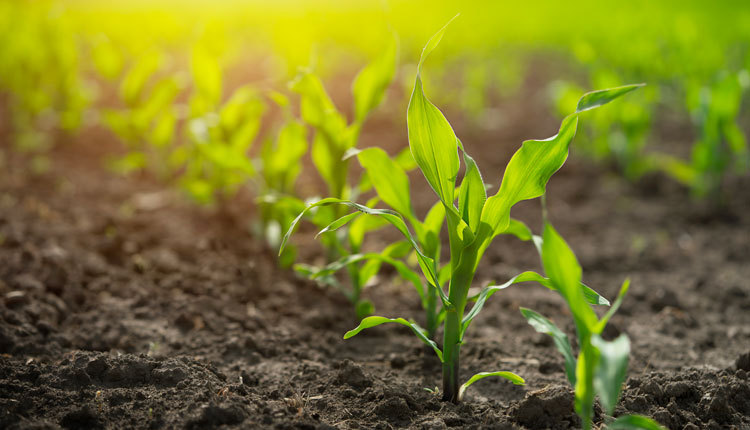The author is the animal nutrition director at Rock River Lab Inc., in Watertown, Wis., an adjunct professor at the University of Wisconsin-Madison, and a consultant with Cows Agree Consulting LLC.

My memory is admittedly poor. There are numerous examples of where I’d met someone previously, only to reintroduce myself and completely forget about our prior introduction or interaction.
My wife can also attest to my poor memory, although she might suggest my recall is selective. In light of my mental capacity shortcomings, one way my friends, colleagues, and wife have learned to get through my thick skull and ensure something sinks in is to repeat the point several times over.
As I’ve led discussions and written articles over the past decade, I find the same concept to be true for audiences. In the Feeding Fundamentals column and throughout invited talks or seminars, we tend to cover a lot of ground. Beyond whatever content I put forth, we’re also bombarded with information. Hence, revisiting a topic one or two times after the initial introduction is helpful. Heading into late fall, as we transition to feeding new crop silage and grain, the time is right to revisit the feed hygiene diamond in further detail. Prior to revisiting the feed hygiene topic, let’s cover a few feeding strategies as we transition to 2024 silage.
Wide quality range
We all have a friend or family member who tries topping our stories when we gather. Agronomist Todd Schaumberg suggested 2024 was just like that. From South Dakota and Iowa out to New York and Pennsylvania, this year’s haylage and corn silage quality will be widespread. The Rock River Laboratory 2024 haylage quality for these regions looks more like a pancake than a bell curve. In turn, this means that we’ll have more nutritional or moisture variation in our feeds to uncover and manage. This greater variance isn’t a bad thing; we just need to adjust our approach to monitoring moisture or quality and balancing diets. Here are a few tips.
Work with trends
Don’t rely on a single sample for moisture or quality; instead, work with a two- or three-sample trend and sample more frequently. Think of single samples as the equivalent to taking a single shot when mounting and sighting in a new scope on a rifle. Consider sampling weekly or every couple weeks, then use the three-sample moisture or quality averages as your result to adjust and balance diets with.
Beyond sampling, consider stretching your 2023 silage out further if the 2024 silage looks to be marginal in quality. For late-planted corn, or where pollination and ear fill were limited and starch content is low, we can stem the blow associated with lesser forage quality by feeding 2023 and 2024 silage at the same time. This concept has historically been blasphemous; however, many producers have excellent 2023 silage, and we can reduce the impact 2024 silage quality or greater variation has on the diet by feeding 2023 and 2024 silage. This is especially true during the cooler months, when bunk life is less of a challenge.
Now, circling back to the feed hygiene topic, in the September 10, 2024, issue we reintroduced the feed hygiene diamond. In that issue, we spent time discussing the environmental conditions that affect the microbial bases of the diamond. As we transitioned from late summer into mid-fall, there’s been an uptick in feed hygiene-oriented technical support discussions.

Watch closely
The feed hygiene diamond, as shown in Figure 1, lays out the risk factors to manage when digestive upset, herd performance, or unexpected increases in herd losses come about. There are typically two or three bases to cover. Hence, I recommend assessing relative risk in the fungal, bacterial, nutritional, and environmental stress areas.
I tend to take a total mixed ration (TMR) hygiene diagnostic approach to measure fungal, bacterial, or nutritional stressors. The environmental stress relates to temperatures and humidity, but also crowding or other management induced stressors that may ebb or flow on a farm. With a risk assessment in hand, we can put together a feed hygiene management plan to strategically address the concerns we’ve identified.
For fungal contamination, such as spoilage yeast or mold, eliminate the source at the feed center or in the ration, or add a preservative to the contaminated feed. Probiotic yeast or bacterial feed supplements can also help. For fungi-produced mycotoxins, dilute the contaminated feed in the diet or add a research-backed mycotoxin mitigating feed supplement technology. There are a range of different additives and technologies on the market.
Bacterial contamination is less recognized, but 1,000 colony-forming units per gram or more in a TMR can contribute sizably to gut health challenges when combined with other hygiene risk factors. Often, we can clean up the mixer, feeding equipment, or feedbunks with a pressure washer or by keeping them out of mud and manure and address the challenge. Keep an eye out for pooling water and increased water activity (a proxy for spoilage) like we covered in the September 10, 2024, article. There are a number of bacterial probiotic feed supplements that can help here as well.
Keep feed consistent
Lastly, nutritional stress can include swings in quality with feed ingredients. Cows crave consistent nutrient supply and rations. In normal conditions, cows can handle inconsistencies; however, if other risk factors are present, make all efforts to keep your rations consistent — from feed delivery to refusals to nutrient supply. These points may be redundant for some readers, but for those with a compromised recall like me, these quick points will hopefully jog your memory.










